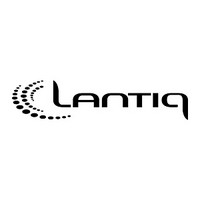PSB2115FV1.2D Lantiq, PSB2115FV1.2D Datasheet - Page 207

PSB2115FV1.2D
Manufacturer Part Number
PSB2115FV1.2D
Description
Manufacturer
Lantiq
Datasheet
1.PSB2115FV1.2D.pdf
(317 pages)
Specifications of PSB2115FV1.2D
Lead Free Status / Rohs Status
Supplier Unconfirmed
- Current page: 207 of 317
- Download datasheet (4Mb)
Semiconductor Group
3.6.5.2
The transition criteria used by the IPAC are described in the following sections. They are
grouped into:
C/I Commands
AR
ARL
AI
AIL
DC
DR
RES
RSY
TM1
TM2
–C/I commands
–Pin states
–Events or the S/T-interface.
Activation Request. This command is used to start an exchange initiated
Activation request loop. The IPAC is requested to operate an analog loop-
Activation Indication. Confirms that the U-interface is fully transparent, on
Activation Indication loop.
Deactivation Request. Initiates a complete deactivation from the exchange
side by transmitting INFO 0. Unconditional command.
Please refer to section 3.6.3.2 (C/I commands) for details.
INFO 2 is transmitted consequently by the IPAC.
Test Mode 1. Transmission of single pulses on the S/T-interface. The pulses
are transmitted with alternating polarity at a frequency of 2 kHz. TM1 is an
unconditional command.
Test Mode 2. Transmission of continuous pulses on the S/T-interface. The
pulses are sent with alternating polarity at a rate of 96 kHz. TM2 is an
unconditional command.
activation.
back close to the S/T-interface.
D-channel data transfer is allowed.
Deactivation Confirmation. Transfers the NT into a deactivated state in which
it can be activated from a terminal (detection of INFO 0 enabled).
Resynchronizing. The U-interface has not obtained or lost synchronization.
Intelligent NT Mode Transition Criteria
207
Operational Description
PSB 2115
PSF 2115
11.97
Related parts for PSB2115FV1.2D
Image
Part Number
Description
Manufacturer
Datasheet
Request
R

Part Number:
Description:
Single Phase Rectifier Bridge
Manufacturer:
POWERSEM [Powersem GmbH]
Datasheet:

Part Number:
Description:
Manufacturer:
Lantiq
Datasheet:

Part Number:
Description:
Manufacturer:
Lantiq
Datasheet:










